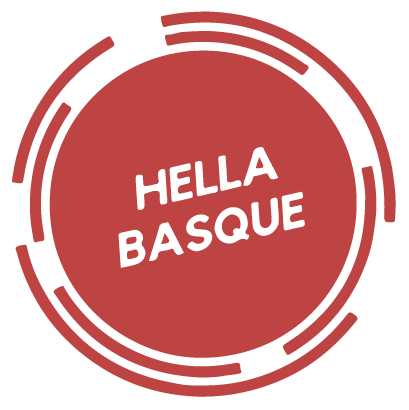This post contains affiliate links, meaning if you click through and make a purchase, I may earn a commission at no additional cost to you. As an Amazon Associate I earn from qualifying purchases. If you enjoy the content on Hella Basque, please consider supporting.
This month marks the 63 year anniversary of when award-winning actor, director, writer, and producer Orson Welles released a documentary series on the Basque Country.
“The Land of the Basques” made up the first two episodes of his Around the World with Orson Welles series for the BBC. Filmed primarily in Iparralde (Northern Basque Country), the documentary provides a brief insight into the Basque people and rural Basque culture in the 1950’s.
Welles attempts to define a Basque, but can mostly only come up with things a Basque is not: French or Spanish. He discusses the French-Spanish border, calling it “more of a theory than a fact” for the people who live in the region.
This is 1955. Dictator Francisco Franco is in power and the border between the two countries is closed, although Welles highlights the active smuggling business across the border. The show also explains how Basques worked together on both sides of the border to hunt pigeons.
Welles touches on the Basque language being banned under Franco. His analysis: “So of course, Basques will be Basques, their language is spoken just a little bit more on the Spanish side.” Indeed, he captures the contrarian spirit and political resistance of the times in such subtleties.
The show features an amusing interview with Jean Idiart, a man who had spent 23 years sheepherding in Montrose, Colorado. They discuss the Basque connection to sheepherding and immigration to the United States.
RECOMMENDED READING The Basque History of the World: The Story of a Nation
Welles also extensively interviews American writer Lael Tucker and her eleven-year-old son Chris Wertenbaker about living in Ciboure, Lapurdi. The American expats agree that education for children is more rigorous in the Basque Country, and the adults discuss at length the benefits of raising children in a rural setting without needing technology to have fun.
Lael Tucker provides her own insight into the Basques with the beautiful summary: “They are proud of their past, easy in the present, and not afraid of the future.”
She notes that Basques have a dignity and pride in having survived everything, although Welles doesn’t share her appreciation for the Basques’ survival.
He challenges her expression, disagreeing with the idea that the Basques have anything to be proud of in their past. He says one can only feel proud of accomplishing great things and argues the Basques have accomplished nothing other than having lived in one place.
Welles misses the point that the mere survival of the Basque people, along with the preservation of their culture and language, is a great accomplishment. That countless other cultures across Europe succumbed to the pressures of political conquests by other groups and assimilated into the dominant cultures over the centuries.
Survival for the Basques is an accomplishment, whether Welles deems to acknowledge it in his documentary or not.
RECOMMENDED Basques Are Unique: It’s In Our Blood
Despite this awkward exchange, Welles does take advantage of Lael Tucker’s unique knowledge as a Time magazine reporter in their discussion of the role of Basques in the resistance to Nazi Occupation during the Second World War. Fascinating stories if you’re a bit of a history buff.
The second section of the documentary largely focuses on different variations of pilota: joko garbi, rebote, esku, pala. Welles follows around Chris Wertenbaker and his school friends as they play after class.
You’ll also find some footage of many fandangos thrown in to show how women have fun too.
Overall, “The Land of the Basques” is an entertaining and interesting short documentary if you’ve got some time to spare. I think the best part about it is that it takes place during a time of Basque immigration to the United States.
A lot of our ancestors came to the U.S. during the 1950’s and 1960’s (my Aita and his brother included), so I find it interesting to see footage of what the Basque Country was like during that period.
In a way it helps me understand Aita a little better. Only recently has he let slip a thing or two about his days smuggling goods across the border, and I teased him mercilessly about it when he finally said anything. It’s no wonder he keeps that history to himself!
Growing up in suburban America, I don’t know the first thing about smuggling and it feels a bit absurd to think of my dad doing illegal things. But seeing this documentary has helped me put this type of economic activity into context.
The two parts of “The Land of the Basques” can be found together on this 41 minute video with Basque subtitles:
CONTINUE READING:
- 9 Movies Filmed in the Basque Country
- A Hella Basque Visit to Iceland
- Why Some Basque Baby Names are Illegal in France and the United States


Facebook Comments